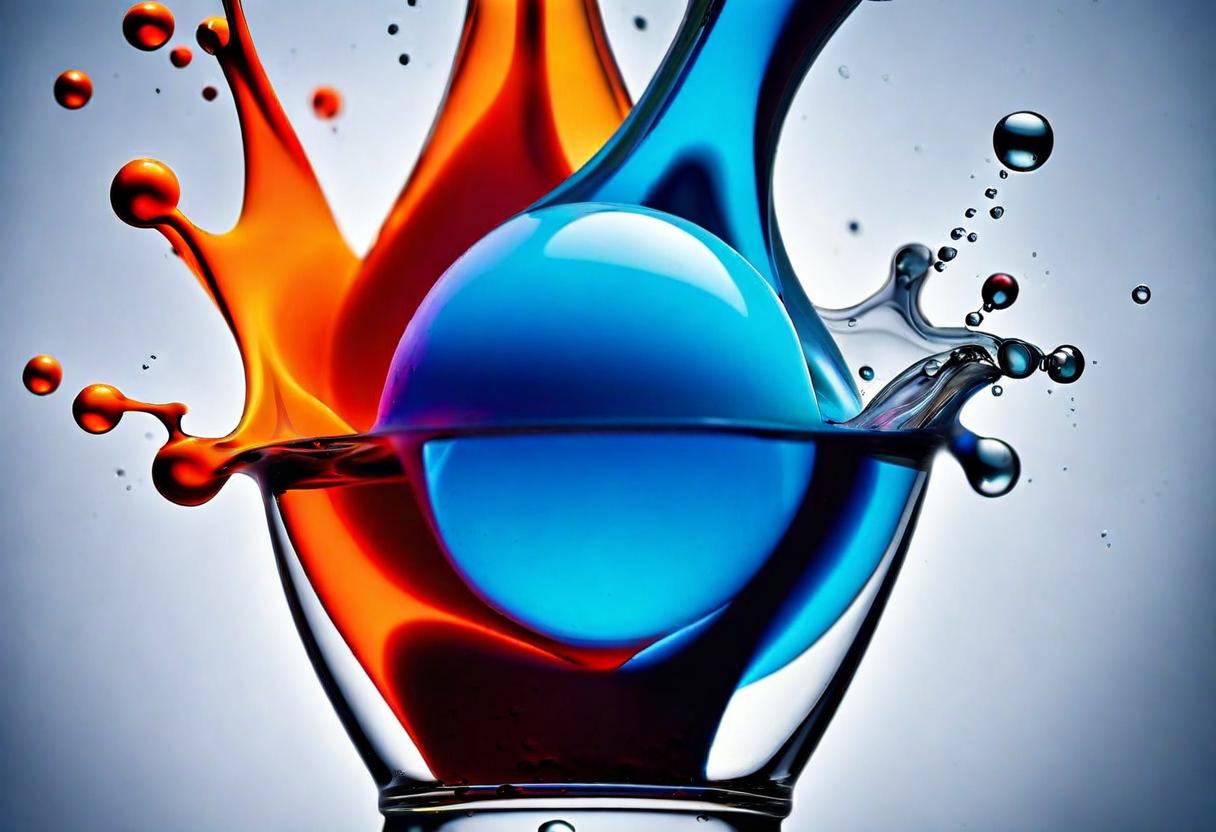Conquer your IGCSE Chemistry exams with a clear understanding of the fundamental building blocks of our world – the states of matter! This comprehensive guide, designed specifically for IGCSE students , will break down the properties and behaviors of solids, liquids, and gases in an engaging and informative way.

Everything you see and touch, from the chair you’re sitting on to the air you breathe, can be classified based on its state of matter. The three main states are:
Matter can transform between its states under certain conditions. Here are some key phase changes to remember:
By understanding the fundamental concepts of states of matter, you’ll be well on your way to excelling in your IGCSE exams. Remember, consistent practice, a clear understanding of the “why,” and effective visualization techniques will be your secret weapons!
The three main states of matter are:
Understanding these states is essential for IGCSE Chemistry.
Solids have a fixed shape, liquids take the shape of their container, and gases fill their container completely. Solids are difficult to compress, while liquids and gases are more compressible.
Solids are rigid, incompressible, and have a fixed arrangement of particles.
Liquids are fluid, incompressible to a certain extent, and have a more random arrangement of particles compared to solids.
Gases are fluid, highly compressible, and have a very random and constantly moving arrangement of particles.
A strong understanding of states of matter is a great foundation. Here are some additional tips:
By following these tips and effectively grasping the states of matter, you’ll be well on your way to IGCSE Chemistry success!

Which of the following statements about solids is INCORRECT?
(a) Solids have a definite shape and volume. (b) The particles in solids are very close together. (c) Solids are easily compressible. (d) The particles in solids vibrate in fixed positions.
Solution: Solids are difficult to compress due to the close proximity of particles. Option (c) is incorrect.
(a) Describe the arrangement and movement of particles in each state of matter (solids, liquids, and gases). (b) Explain why a solid has a definite shape, while a liquid takes the shape of its container.
Solution:
(a) Solids: Particles are tightly packed in a fixed, ordered arrangement with minimal movement.
Liquids: Particles are closer together than in gases but have a more random arrangement and some movement.
Gases: Particles are far apart with constant, random movement.
(b) Solids have a fixed shape because the particles are locked in their positions. Liquids have weaker forces between particles, allowing them to flow and take the shape of their container.
List two physical properties that differentiate solids from liquids.
Solution:
The diagram (Mentioned in IGCSE Question Paper) shows the arrangement of particles in three different states of matter (A, B, and C). Identify which state each represents (solid, liquid, or gas) and explain your reasoning.
Solution:
During which of the following phase changes does a substance absorb heat?
(a) Melting (b) Freezing (c) Evaporation (d) Condensation
Solution: Absorption of heat is required to break the intermolecular forces in a solid during melting. Option (a) is correct.
Describe the process of sublimation and give two examples of substances that sublime.
Solution: Sublimation is the direct change of a solid into a gas without passing through a liquid phase. Examples of substances that sublime include dry ice (solid carbon dioxide) and mothballs (paradichlorobenzene).
Which of the following is NOT a factor affecting the rate of evaporation of a liquid?
(a) Surface area of the liquid (b) Temperature of the liquid (c) Nature of the container (d) Color of the liquid
Solution: The color of the liquid doesn’t significantly affect the rate of evaporation. Option (d) is incorrect.
Explain why a gas can easily fill a container of any size and shape.
Solution: Gas particles are far apart with minimal attractive forces between them. This allows them to move freely and fill the entire container, regardless of its shape or size.
Ice cubes left in a drink eventually melt. Explain this process in terms of the kinetic theory of matter.
Solution: According to the kinetic theory, particles in all states of matter are constantly moving. In ice, the water molecules vibrate around fixed positions. As the drink warms, the surrounding air particles transfer energy to the ice cubes. This increased energy causes the ice molecules to vibrate more intensely, eventually breaking free from their fixed positions and allowing the ice to melt (change into liquid water).
When a sealed container containing a liquid is heated, what happens to the pressure of the gas above the liquid?
(a) Decreases (b) Increases (c) Remains the same (d) Depends on the type of liquid
Solution: Heating the liquid increases the kinetic energy of its molecules, causing them to evaporate faster. As more molecules enter the gas phase above the liquid, the pressure of the gas inside the sealed container increases. Option (b) is correct.
